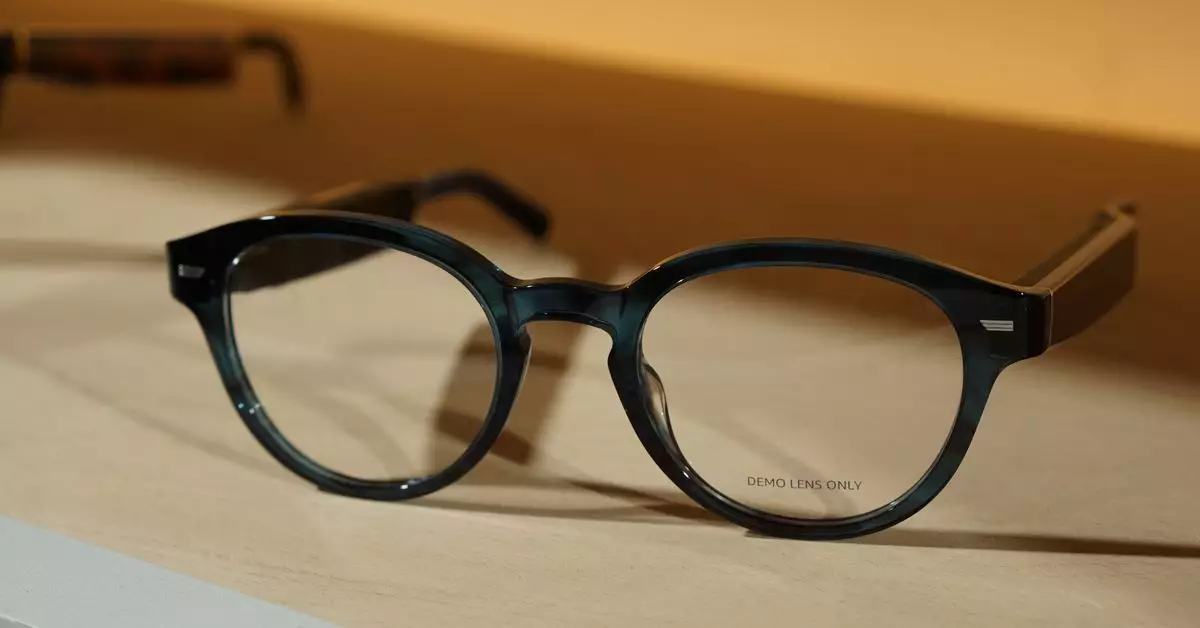In the rapidly evolving landscape of technology, particularly in the realm of wearables, Amazon is setting its sights on developing smart glasses tailored for its delivery personnel. This initiative, codenamed “Amelia,” appears to be a strategic effort not merely to keep pace with innovation, but to drastically enhance the efficiency of the last crucial segment of deliveries. By leveraging a hands-free approach, Amazon aims to refine its operational processes, potentially resulting in quicker and more accurate deliveries.
According to reports from Reuters, these smart glasses will be built upon the existing Echo Frames platform but will incorporate a substantial upgrade: an embedded display. This feature distinguishes them from the current iteration of Echo Frames, which operate solely with audio. The envisioned display is designed to provide drivers with real-time, turn-by-turn navigation, allowing for more specific directives as they navigate complex delivery environments. For instance, drivers could receive instructions such as “turn left after exiting the elevator,” which is a significant improvement over standard voice commands.
Additionally, Amazon is exploring the inclusion of camera functionality within the glasses. This would enable delivery drivers to capture photographic evidence of package deliveries, thus enhancing accountability and reducing disputes related to undelivered items. These innovations could help drivers manage their routes more efficiently, allowing them to deliver a higher volume of packages within their shifts.
Despite the potential advantages, several formidable challenges loom large on the horizon for Amazon. One of the primary hurdles is engineering—developing smart glasses that are lightweight enough to be worn comfortably for an entire eight-hour shift while also housing a battery capable of lasting that long. Past attempts by other companies to create similar devices with embedded displays suggest that this is no trivial undertaking. Many have struggled to overcome the limitations of battery technology and ergonomic design.
Furthermore, pre-existing constraints related to the existing eyewear market also pose questions regarding user adoption. A significant portion of the population relies on corrective lenses, and the current landscape of smart glasses has not frequently accommodated a diverse range of prescriptions. For Amazon to promote widespread acceptance of “Amelia,” it must address these user-specific needs effectively, ensuring that the smart glasses appeal to both drivers and those already dependent on corrective eyewear.
Another consideration is the logistics of getting these glasses adopted by its extensive workforce. A significant number of Amazon delivery drivers are not directly employed by Amazon but are instead third-party contractors. Convincing a diverse and decentralized group of individuals to embrace a new technology can complicate implementation. The transition may require extensive training and resources, posing both a financial and logistical challenge for Amazon.
Moreover, as the company develops these glasses, it will gather valuable data on delivery environments—the so-called “last 100 yards” of delivery. Accumulating this information will take time, as it depends on mapping various building layouts and understanding local infrastructure. Amazon may need to invest years into research and development before realizing its ambitious vision for smart glasses in actual delivery scenarios.
The enterprise market is not uncharted territory for smart glass technologies. Historically, companies such as Google, Microsoft, and Magic Leap have pivoted toward business solutions after struggling in the consumer market. Amazon’s strategy seems to mirror this trajectory, particularly as the previous generation of Echo Frames reportedly sold fewer than 10,000 units—a number dwarfed by the success of competing products like Ray-Ban Meta glasses.
Given the inherent risks associated with developing smart glasses for its delivery network, it remains uncertain whether Amazon will confine this technology to its internal operations or if there is potential for a broader commercial release, including contracts with third-party businesses. The possibility exists that technology developed for Amazon’s fleet could find applications in other sectors, benefiting from lessons learned during its implementation.
While Amazon’s venture into smart glasses for delivery drivers has the potential to revolutionize last-mile logistics, significant engineering, market adoption, and strategic hurdles must be addressed before these ambitious plans can bear fruit. The evolving narrative of wearables echoes throughout the tech industry, and Amazon is strategically positioning itself in this ongoing saga.

